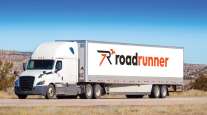LTLs Report Sizable Quarterly Profit Gains on Improved Rates, Rising Tonnage Levels
This story appears in the Nov. 3 print edition of Transport Topics.
Four of the largest U.S. less-than-truckload operators improved profitability by 25% or more in the third quarter, powered by improved rates, carriers’ earnings reports showed last week.
Con-way Inc. led with 49% growth in net income to $45.6 million, or 78 cents per share. It reported 39% higher profit before interest and taxes from its largest unit, LTL operator Con-way Freight, on Oct. 29.
One day later, Old Dominion Freight Line Inc. said income jumped 30% to $77.9 million, or 90 cents, while Saia’s Inc.’s net income rose 26% to $16.3 million, or 34 cents.
YRC Worldwide late Oct. 30 said it reversed a 2013 loss and posted net income of $ 1.2 million.
“Our LTL company benefited from a solid rate environment supported by firm demand in the quarter,” Con-way CEO Douglas Stotlar said.
He stressed pricing improvement steps that raised revenue per 100 pounds of freight by 5.3%. That was the largest increase among the reporting carriers.
Saia raised revenue on that basis 4.3%, while Old Dominion’s 1.6% increase was far outweighed by an industry-leading 19% increase in tonnage.
Saia also relied on tonnage growth during the quarter, said Chief Financial Officer Fritz Holzgrefe, including 8% in July, 7% in August and 9% in September.
James Welch, CEO of YRC, cited tonnage and rate improvement.
However, Roadrunner Transportation Services’ LTL profit before interest and taxes was cut in half to $5.5 million as purchased transport costs outpaced a 2.2% rate growth. Improved truckload and freight management profitability allowed the company to squeeze out 8.9% more net income of $14.4 million, or 38 cents per share.
The improvement in the sector also extended to LTL service at UPS Inc. and FedEx Corp., which rank Nos. 1 and 2, respectively, on Transport Topics Top 100 list of the largest for-hire carriers in the United States and Canada.
Con-way, No. 4 on the list, raised corporate revenue by 7.6% to $1.5 billion, including 5.2% higher LTL revenue of $946.3 million and 17% higher logistics revenue of $443.9 million.
Revenue at No. 25 Saia increased 13% to $332.5 million.
No. 12 Old Dominion’s revenue was 21% higher at $743.6 million.
YRC, No. 5, reported that revenue rose 5.6% to $1.32 billion.
No. 21 Roadrunner raised LTL revenue by 4.8%.
In an investor note, Robert Salmon of Deutsche Bank cited management changes and claims expense, as well as the higher costs to buy linehaul LTL service from contractors as factors in weaker Roadrunner LTL results. The other four carriers that reported last week rely on employee LTL drivers.
Stotlar and other fleet executives forecast continued improvement in the current quarter.
During a conference call, Stotlar gauged fourth quarter LTL profit growth before interest and taxes at about 60%, a pace that would top any other quarter this year.
“There is upside that will allow for improved performance as we optimize our network to handle the increased volumes in a capacity-constrained environment,” said Saia CEO Rick O’Dell.
Old Dominion’s Chief Financial Officer Wes Frye outlined fourth- quarter revenue growth plans that continued the
third-quarter pace, with particular strength in the northern and western portions of the country.
Last week’s earnings reports and conference calls also brought favorable indications from Old Dominion on another subject — the potential use of 33-foot LTL trailers to supplant the longtime industry standard 28-foot pup trailers. Those longer LTL trailers increase productivity by 18% without boosting the 80,000-pound weight limit.
“We believe we have a good chance of getting that through” in upcoming transport funding legislation, Frye said.




